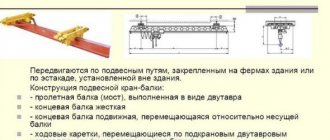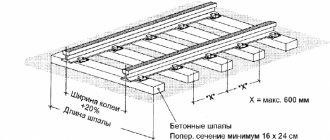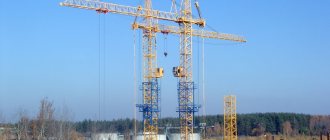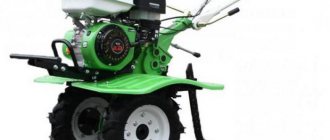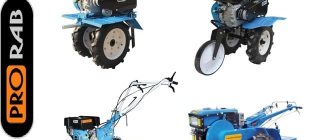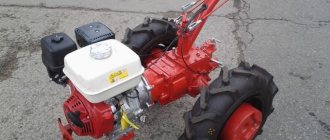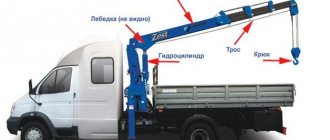Published
01/10/2018 |
Author: kmveg 0
Without a crane, the construction process becomes impossible. Indeed, the organization of buildings (especially multi-story ones) often requires the movement of large-sized, large-capacity objects. Special equipment allows not only to reduce the time spent on transportation, but also the number of injuries to workers at a construction site. Cranes vary in their equipment and design.
A wide range of specialized equipment is presented here. Choosing a crane (rental use is offered) to solve your own problems will not be very difficult. The operating principles of equipment for lifting loads are transparent and understandable. Their technical simplicity guarantees reliability and efficiency.
What is a tower crane
The crane is called a tower crane because the load-bearing support of this cargo vehicle resembles the structure of a tower, all elements of which are made of metal. In addition to lifting, crane equipment can move a load lengthwise and also rotate it around a central axis. This makes it possible to deliver building materials to almost any point where work is taking place.
In the dictionary Dictionary of foreign words
I
a, pl. taps, ov {not: taps, ov}, m.
A shut-off device for pipelines, in which a valve in the form of a conical plug with a hole rotates around an axis perpendicular to the axis of the liquid or gas flow. Open k. Water tap. Tap - reduce. from k.||Avg. VALVE" title='VALVE, VALVE, what is VALVE, VALVE interpretation'>VALVE, REDUCER" title='REDUCER, REDUCER this, what is REDUCER, REDUCER interpretation'>REDUCER.II
a, m.
A structure or mechanism for lifting and moving loads. Lifting station. Crane operator is a worker who operates a crane. Crane - relating to the crane, taps.||Cf. JACK.
Classification of crane equipment
Tower cranes are classified according to several criteria.
By purpose:
- General use - for the construction of industrial and civil facilities of medium complexity.
- Special application - for solving highly complex problems.
- High-rise cranes capable of working at great heights during the construction of skyscrapers. They are self-lifting, attached and creeping.
- Crane loaders are often two-post systems (gantry cranes) mounted on rail guides for movement. They are intensively used in large industrial warehouses.
On freedom of movement:
- Stationary type - divided into attached and universal models.
- Mobile – transported by trailer or on a self-propelled basis.
- Self-lifting equipment that is attached to the top of the structure being built.
According to the running mechanism:
- Tracked;
- On pneumatic wheels;
- Rollerblading on a rail track;
- On the chassis;
- Walking cranes;
- Based on cars.
In addition, the designs of modern crane equipment are classic, quick installation and topless.
Taking into account the design of tower cranes and the role of their application, the equipment is grouped into groups. Within these groups, models may have identical assembly units, similar circuit diagrams and standard block modules. This approach greatly simplifies the task of choosing the right unit for the consumer among different manufacturers. It also simplifies the maintenance of crane equipment.
Features of repairing faucets in the kitchen
In fact, you are unlikely to need the internal structure of the faucet until your faucet fails. Then there is an urgent need to disassemble it and look for damage.
And if you prepare in advance and study the algorithm for disassembling the mixer before a malfunction occurs, you can save time and nerves by being prepared for unforeseen situations.
Disassembling a single lever mixer
In order to disassemble a single-lever mixer and get to its device, you must follow these simple instructions. First, turn off the water supply - turn off the water. To unscrew the mixer body, you need to remove the decorative plug (often looks like a round red-blue insert).
A decorative plastic insert hides an unaesthetic screw. Some parts of the mixer are specially made removable to provide access to the main operating parts during repairs.
Behind the plug you will see a screw connecting the lever and the rod. You need to unscrew it with a screwdriver. After this, you can remove the control knob. The next step is to unscrew the locking ring. To do this, you need to use an adjustable or gas wrench.
If the nut does not unscrew, you can gently tap the key with a hammer in the direction of movement, this should help
After diagnosing or repairing or replacing, you need to perform all steps in reverse order. In plumbing, it is important not to “tighten” threaded connections, but they should not “walk” either.
How the crane works, its principle of operation
Models of tower cranes produced by modern engineering enterprises have 5 main parts.
Lattice tower. Based on tubes or telescopic with a rotation at the bottom, at the top of the vertical part of the structure. Among the models that are produced nowadays, there is equipment with an expandable or extendable folding tower (with the possibility of dismantling on site) and non-dismountable.
The boom is working. It is a horizontal lifting element made according to the principle of an articulated or beam structure of a suspended or hammer-type type. The materials used are metal profiles, angles or pipes. The booms are equipped with a cargo trolley.
Tower crane structure
Working boom . It is a horizontal lifting element made according to the principle of an articulated or beam structure of a suspended or hammer-type type. The materials used are metal profiles, angles or pipes. The booms are equipped with a cargo trolley.
Bearing support. Holds the entire faucet. It is located at the base of the tower and resists all overturning loads, has increased strength and reliability.
Moving device (chassis) . It is responsible for moving the entire structure of the tower crane and turning it around. It happens with the use of different supporting and moving elements.
Operator's cabin . It controls all types of mechanisms responsible for the operation of equipment components.
Re-registration
The number assigned when registering the lifting structure is retained until the end of use of the unit. However, the rule applies to equipment with one owner.
Re-registration of cranes in the Rostekhnadzor department is required for lifting equipment after:
- reconstruction works;
- major repairs (if a new technical passport has been drawn up for the equipment);
- moving the bridge unit to another permanent site.
It is necessary to deregister equipment at the RTN department if:
- failure of the device and decommissioning from the list of company objects;
- transfer of the device to the category not subject to registration after reconstruction.
The company must submit a written application and a technical equipment passport with recorded reasons for re-registration or removal of the object from the list of registered ones.
Basic systems
The mechanics of a crane presupposes the presence of three basic systems with the help of which all movements of lifting equipment are possible - these are winches, blocks and pulleys. They allow you to:
- Rotate and move the tower;
- Raising and lowering the boom in the vertical direction;
- Changing the horizontal reach or moving the cargo cart.
To capture the load, a hook clip fixed to a steel cable is used. The cable moves due to the operation of the winch through a block on the cargo trolley, providing lifting to the desired height. The winch is also responsible for moving the trolley itself. The rotation of the structure is carried out due to the rotary support device, which transfers overturning loads and vertical loads to the fixed part of the frame.
Design
The crane design includes:
- metal structure that forms the basis of the crane. In fact, everything that we see in a crane relates to metal structures - spans, supports, booms, etc. Metal structures come in box-shaped (on most truck cranes and overhead cranes) and lattice sections (mainly tower cranes). Depending on this, operating and supervision conditions, production methods and design calculations change. Each of these types has both pros and cons. The application of a specific type is selected according to technical, technological and other requirements. It should be noted that, in principle, these two types are interchangeable, but the adequacy of their application to operating conditions and tasks should also be assessed.
- a load lifting mechanism consisting of a flexible lifting device (steel rope or chain), a load-handling device (hook, loop, grab, etc.) and a cargo winch. To ensure safety in operation, the lifting mechanism is equipped with various limiters (load capacity, load moment, stroke of the lifting member);
- load-handling device may be non-automatic (hook, loop) or automatic (electromagnet, pneumatic suction cup, spreader, etc.).
Also, the crane can be equipped with mechanisms for moving the cargo trolley, changing the boom reach, rotating the load-bearing element around the support, etc. Stacker cranes are equipped with a column rotation mechanism.
All main types of cranes (except jib cranes) are equipped with load capacity or load moment limiters, which may also have a parameter recorder for collecting information about the loads being lifted.
Main technical characteristics
Tower-type lifting mechanisms are characterized by the following parameters:
Technical characteristics of the KBM-401PA tower crane with a luffing jib
- Maximum boom reach with tilt and horizontally;
- Minimum reach;
- Maximum possible reach with the maximum permissible load with an inclination and horizontally;
- Maximum permissible load weight at maximum boom radius;
- Maximum level of rise in height;
- Minimum lowering of the load;
- Speed of extension of a loaded boom;
- Speed of lifting weight;
- Empty hook lifting speed;
- Speed of movement across the terrain;
- Rotation frequency around the support tower.
KB-408.21
For example, the KB-408.21 crane has:
- Boom - beam type;
- Tower - rotatable design;
- Possibility of extension - with a loaded hook;
- Chassis type – on rollers on rails;
- Drive control – electric;
- The location of the counterweight is on the rotating platform at the bottom, on the spacer at the top;
- A tower of eight sections.
Tower crane KB-408.21
The technical characteristics of the lifting mechanism are as follows:
- Load capacity (t) at maximum boom extension horizontally – 3, obliquely – 10;
- Reach (m) maximum horizontally – 40, inclined – 35;
- Reach (m) minimum horizontally – 4.5, inclined – 4.2;
- Extension (m) at maximum load horizontally – 16, inclined – 14;
- Lifting height (m) horizontally – 54, inclined – 72.2.
RBC-2.20
The RBK-2.20 crane has the following design:
- Boom - beam type;
- Tower - rotating telescopic;
- Possibility of departure - with a loaded hook;
- Stationary;
- Drive control – electric;
- The counterweight is located on the rotating platform at the bottom, on the spacer at the top.
Tower crane RBC-2.20 - technical data
The technical specifications are as follows:
- Load capacity (t) at maximum horizontal boom extension – 0.7;
- Reach (m) maximum horizontally – 25;
- Reach (m) minimum horizontally – 4.5;
- Extension (m) at maximum load horizontally – 10;
- Lifting height (m) – 18.9.
Installation of lifting mechanism
The main element of the crane is the lifting mechanism, which can be manual or automatic. The tefler consists of a cable and a winch installed on the side of the rack. The cable moves due to the rotation of the rollers. Additional fixation of the elements is not required; it is enough to secure the lift to the rack.
A self-made crane can be equipped with lifting equipment that is used in elevators. Such mechanisms are highly reliable and able to withstand massive objects.
To simplify repair work, it is possible to connect an electric drive to the lifting element. To automate the design, a motor with a power of 300-500 W is suitable. The electric drive is mounted to the base of the crane beam.
The design, equipped with an electric drive, is widely used in large-scale garage repairs and car disassembly for spare parts when a complex of work is required. According to the principle of operation, manual and automated cranes do not have significant differences.
Experienced car owners say that a crane beam is rarely needed in the garage, but if it is needed, there is nothing to replace it with. It is used for removing and installing the engine, and less often for moving other loads. Purchased mechanisms are expensive and take up a lot of space, so the best solution for a private craftsman is a do-it-yourself beam crane made from scrap materials.
In order to make a garage lift with your own hands, you will need:
- For racks - pipe with a cross-section of 100x100, length 2350 mm - 2 pcs.
- For the cross rod - a round pipe with a diameter of 100 mm and a length of 4150 mm.
- For supports – round pipe with a diameter of 110 mm and a length of 600 mm – 2 pcs.
- For bases and diagonal supports - corner 100x100 mm.
- M 16 bolts for attaching supports to rods.
- Wheels (for example, from a warehouse cart) – 4 pcs.
- Manual winch with a lifting capacity of up to 1 ton.
- Cable and rollers (for example, from an elevator door drive).
A beam crane is necessary for moving various loads
Crane beam device
The mechanism is a U-shaped structure (bridge) with a lifting mechanism. In large auto repair shops, both parts may be movable. The bridge moves on rails, the lift moves on a span beam. In garages, to save space, rails are not laid, and the bridge is equipped with wheels.
The crane beam device consists of supports, a span beam and a lifting mechanism. The supports are welded from metal pipes and channel bars. A manual or, less commonly, electric winch is used as a lifting mechanism.
Girder cranes are of the "floor operated" type, as opposed to those that are handled from a cab. To make the mechanic's work easier, the garage crane can be equipped with an electric winch
. This will increase manufacturing and maintenance costs, but if it is necessary to frequently dismantle engines and other heavy units, it will pay for itself. In rural areas where there are power outages, insufficient power or voltage surges, you should give preference to a manual winch. Especially if we are talking about a personal garage and not a private workshop.
Above we looked at what a beam crane consists of: supports, a span beam and a hoist. Manufacturing takes place in several stages:
- Weld the vertical supports in the shape of an inverted T with two diagonal supports.
- Weld the span pipe to form a U-shaped structure.
- Install the wheels.
- Weld a winch to one of the side supports.
- Install the lifting mechanism: fix the rollers, stretch the cable and hang the hook.
Ready-made drawings can be found online, but it’s easier to make it yourself by adjusting the product to the size of the garage.
Crane drawing
If for some reason this type of lift is not suitable, you can make a goose garage crane with your own hands - it will take even less time. The gooseneck crane has an L-shape, where the vertical stand is equipped with a jack rather than a winch. It is rolled under the car from the front and the engine is lifted by pumping a hydraulic jack. The boom moves upward and lifts the load.
Another interesting solution that will help save space is a suspended crane beam. Unlike the supporting structure described above, the span beam is attached to the ceiling by means of a rail (I-beam). This option requires sufficient ceiling height and strength of the building.
All devices must be tested with a load 20% greater than the maximum intended load.
Scope of application of tower crane
There are several industries where tower cranes are used. It's basically:
- Real estate construction;
- Shipyards;
- Large industrial workshops and warehouses;
- Special appointment.
In construction, cranes are divided by power:
Tower cranes are used in industrial and civil construction
- Low-power - used in low-rise construction. They can lift loads weighing up to 5 tons;
- Medium-power – they construct multi-storey general purpose facilities and industrial buildings. They have a gravity load of up to 25 tons;
- High-power equipment carries out installation of structural elements at industrial facilities and in hydraulic construction. In this case, the weight of the cargo can reach up to 100 tons.
In the hydraulic engineering field, cranes of all power levels can be used. The weak perform operations of an auxiliary nature, the medium strength - as pile spreaders for delivering concrete in containers during the construction of concrete monolithic elements. High-power equipment is used for installation of reinforced concrete structures.
When constructing low-pressure hydraulic structures with a mass of component elements reaching 80 tons, tower cranes with a large lifting capacity of over 100 tons are used. They are installed in pairs on the sides of the structure.
At ship repair and shipbuilding plants, two types of lifting equipment are used:
- With lateral limited supply (fixed taps);
- With lateral feed along the entire line of the slipway (mobile cranes).
Typical parameters of tower cranes
Fixed tower cranes are convenient due to the ability to rotate the tower 360 degrees, which increases the operating area. Mobile cranes on rollers have a simple design and are the most commonly used.
General information and parameters
Modern lifting equipment began to be produced in Russia in 1936. When large-scale construction of buildings and structures from large prefabricated reinforced concrete blocks began. To significantly speed up the process of building construction, the method of installation “from wheels” has become widely used. Thanks to this, over several decades, more than 80 modifications of cargo cranes have appeared.
Factories throughout the country were producing this equipment. However, the reorganization of construction methods proceeded faster than the improvement of the designs of lifting mechanisms. Therefore, VNII Stroymash decided to create and implement a unified state standard. The production of machines according to the new rules made it possible to update, improve and unify the existing fleet of construction machines.
Today, lifting equipment forms a whole group of industrial equipment designed to move cargo in space. The characteristics of modern lifting cranes meet all the requirements of organizational and technological solutions at construction sites. Technological maps and work plans take into account the operating parameters of lifting mechanisms interconnected with the features of the building being constructed. These include:
- The boom radius is the horizontal distance in meters from the rotating crane structure to the axis of the hook suspension. It is measured without a load or in the position of the crane on a horizontal platform and is indicated by the symbol L. The boom radius without an installed load is called installation, and with a load - shunting. The boom reach distance must ensure safe construction work, including in conditions limited to residential buildings. It is necessary to know this parameter in order to calculate the boundaries of the dangerous zone of the crane operation and the boundaries of a possible fall of the load.
- Load capacity is the maximum weight of the transported load that the mechanism is designed to lift. This value also includes the weight of the grab, traverse and slings - removable devices for gripping the load. The dependence of the lifting capacity (Q) on the boom radius (L) and its length is expressed graphically in the form of a diagram on which the key points and properties of the lifting capacity are indicated. Determining this characteristic is necessary when selecting the type and model of machines for construction work. In this case, the weight of the heaviest structural element of the building being erected is taken into account.
- Lifting height (H) is the distance from the starting point of parking to the top point of the load-handling device in the working position.
- Load moment (M) - represents the product of the reach of the load-handling element and the load-carrying capacity. The resulting value takes into account two key characteristics, so it is used to indicate the main general parameter of the crane.
- Track (K) - the distance measured between the axes of the supporting surfaces of the running parts of the machine. This characteristic is necessary for the design and designation of the working path of the machine in the work project.
- Speed of lifting and landing and moving weight in operating mode (V). Functionality and speed parameters are taken into account during installation and laying of structures.
- Performance. It is measured in the number of units or mass of materials that a machine assembles or moves during a certain cycle in a period of time.
- Total weight of the unit. The value of the mass of the crane with ballast, mounting and transport devices and counterweight. It is taken into account when selecting a crane for specific soil parameters.
The purpose of cranes is to work with loads not only on a construction site, but also in industrial production conditions. Spatial movement of large structures and materials is the main functionality of these machines.
Homemade mini crane based on a bottle jack
To make a hydraulic crane, we will use available materials that many people have in their garage.
We recommend: Stand for a small grinder made from an old bicycle
And even if you don’t find anything suitable at hand, everything you need can be purchased for pennies at a ferrous metal shop.
The lifting mechanism is useful both in the garage (for example, to raise and lower a car engine), and during construction work - for installing and dismantling various metal structures.
Basic materials that will be required to make a mini crane:
- profile pipe with a wall thickness of at least 3 mm;
- metal plate 5 mm thick;
- bottle jack (load capacity is at your discretion);
- swivel wheels;
- steel chain with hook.
Main stages of work
The first step is to make a support for the hydraulic mini crane. For this we need profile pipes.
Using a grinder, we cut pieces of suitable length and weld the base. After this, it will be necessary to weld a vertical stand to the support.
We weld two metal plates to its upper part, to which the lift boom is attached.
As a drive that will raise and lower the boom, we use a hydraulic jack with a lifting capacity of 12 tons (you can use another jack).
We weld a piece of profile pipe to the vertical post at an angle, which will serve as a stop for the jack.
We cut out a square plate from sheet metal and weld “ears” to it. Using a bolt and nuts, we attach the plate to the stop - this is a movable platform on which the sole of the jack will rest.
We weld a “glass” to the bottom of the boom for the support point of the jack piston. Next, we clean the welds with a grinder, after which we paint all the manufactured elements.
Assembling a load-lifting crane
We attach the bottle jack to the movable support platform on the vertical stand. We lower the boom so that the jack piston enters the “glass”.
We recommend: “Third hand” for welding small workpieces and parts
We install the retractable section of the telescopic boom, to the end of which we attach a chain with a crane hook.
This homemade lift is perfect for removing and then installing the engine from the car. It can also be used for other purposes - in the workshop and garage. The design is reliable and inexpensive.
For a step-by-step description of how to make a mini crane from a jack for a garage or workshop, watch the video.



